Watering Your Lead Acid Battery: The Basics
Nothing feels better on a hot day than a cool, refreshing drink of water — and almost nothing’s better for your body.
That refreshing drink of water is just as crucial to your lead-acid battery. Because, like us, flooded batteries require periodic watering to stay healthy — not too much or too little.
Watering your lead acid battery is an essential maintenance step that must be completed. It keeps your battery safe for use and in optimal condition. Not watering your lead acid battery at the right time can lead to severe damage, but knowing when is the right time to water your battery can be challenging.
BATTERY WATERING QUICK TIPS
To keep your lead battery running at leak levels, follow these watering guidelines:
-
Always wear Personal Protective Equipment (PPE), including safety glasses, gloves, and long sleeves
-
Use only distilled or demineralized water (never add battery acid)
-
Only water after charging is complete (watering before charging may cause battery electrolytes to overflow, a chemical spill that also diminishes battery capacity)
-
If battery plates are uncovered or not submerged in an electrolyte, do not charge them. Instead, fill batteries until just the tops of the battery plates are covered with liquid. Then they are ready for charging.
Watering schedules will vary based on the operating environment, battery age, and temperature. Ask your manufacturer or installer for recommendations — and be sure to put routine maintenance on your calendar.
WHY BATTERIES NEED TO BE WATERED
Lead acid batteries consist of flat lead plates immersed in a pool of electrolytes. The electrolyte consists of water and sulfuric acid. The size of the battery plates and the amount of electrolyte determines the amount of charge lead acid batteries can store or how many hours of use. Water is a vital part of how a lead battery functions.
Additionally, during the recharging process, as electricity flows through the water portion of the electrolyte, water is converted into its original elements, hydrogen, and oxygen. These gasses are flammable, so your RV or marine batteries must be vented outside. Gassing causes water loss, so lead acid batteries need water added periodically. Low-maintenance batteries like AGM batteries are the exception because they have the ability to compensate for water loss.
Overwatering and underwatering can both damage your battery. Follow these watering guidelines to keep your lead battery running at peak levels.
FIRST — START WITH SAFETY
To get started, wear personal protection equipment such as protective eyewear and gloves when working on batteries. Also, it is imperative to understand that some batteries require regular watering service, while others deliver maintenance-free operation.
Ensure to look for information on the battery labeling indicating whether the battery can be opened and serviced. Depending upon your battery type, the warning labels should direct you to “DO NOT OPEN” the battery or “KEEP VENT CAPS TIGHT FOLLOWING WATERING SERVICE.” Make sure to follow the warning label instructions.
HOW TO WATER A BATTERY
While a battery should only be filled after it is ultimately charged, you should also check the water level before charging to ensure enough water covers any exposed plates. After charging, add enough water to bring the level to the bottom of the vent, about ¾ below the top of the cell.
It’s important to note that battery owners should never add sulfuric acid to their batteries. During regular operation, batteries consume only water — and not sulfuric acid. When your battery’s electrolyte is observed to be low, filling the battery with water will keep the battery healthy and safe for use.
DON'T OVERWATER
While a battery is charging, the density of the electrolyte solution will increase. If too much water is added before charging, the electrolyte levels will expand and cause the battery to overflow and damage the battery. Additionally, excessive battery watering can result in additional electrolyte dilution and reduced battery performance.
WHEN SHOULD YOU WATER A BATTERY?
How often you add water to your battery will depend on how often you use it. A golf cart battery operated on the weekends may only require watering once a month. A forklift used all day, every day, may need to have its battery watered every week. When the weather is hot, this will increase the need for watering.
It’s essential to check your battery’s fluid level regularly — and the best practice is to do so after the battery is finished charging.
WHAT TYPE OF WATER SHOULD BE USED?
Avoid using tap water. Regular tap water isn’t going to cut it when filling your battery. Tap water contains minerals harmful to batteries, even if added in small amounts. This is particularly true for water softened by water softeners which contain chlorides. To be safe, distilled water is your best bet and is a much smaller investment than a new battery.
Remember that water will sit on top of the acid solution in your battery until it is mixed by the bubbling produced by charging. If you are taking hydrometer readings of the electrolyte, it’s best to take them after charging is complete.
Don’t let your battery get dehydrated! Keep it watered during hot months and all year long.
This blog was originally published on July 14, 2017, and was last updated on August 21, 2023.





